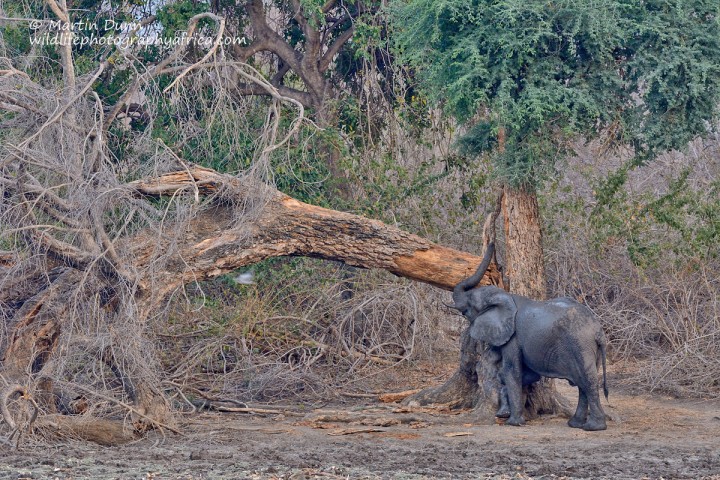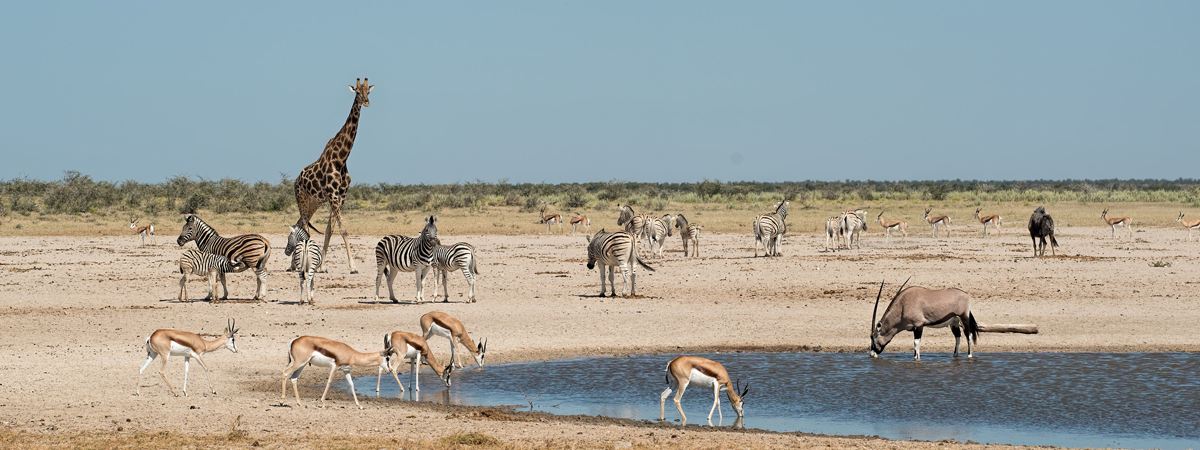Elephants at Kanga Pan
Our first sight of Kanga Pan did not fill us with optimism.
What we saw was a lot of mud, with a few small pools full of stagnant green water and it certainly bore little resemblance to the year round waterhole we’d been expecting.
Appearances can be deceptive though, and over the course of the 2 days we spent at Kanga Camp, we saw a greater variety of game at these muddy pools than we saw at any other waterhole.
In fact the only waterholes I can think of where I have seen such variety are Vlei Pan in Madikwe and some of the waterholes in Etosha.
Elephants visited the Kanga Pan at all hours of day and during the night we coul hear them splashing around.
Sometimes we’d spot them making their way through the forest that fringes the pan, following well worn paths that brough them directly to the waterhole.
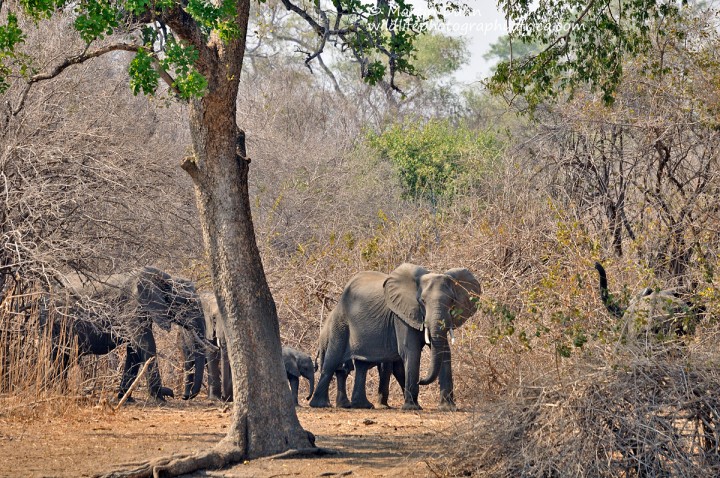
Walking out onto the dry mud they’d often stop to sniff the air, reassuring themselves that there was no danger.
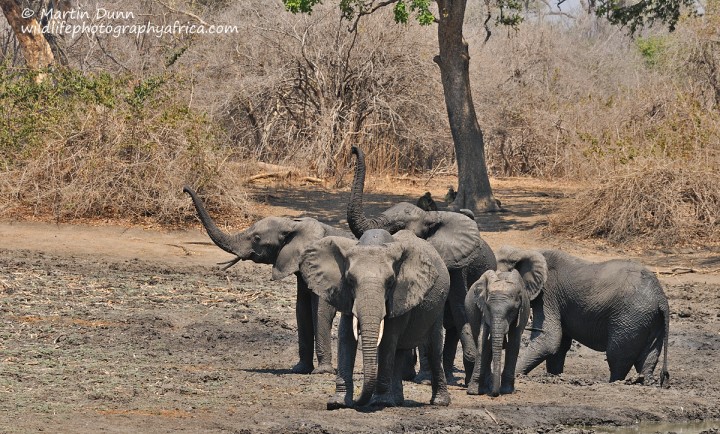
One of the things we are all guilty of when watching animals is to attribute human behaviour and characteristics to them. Anthropomorphism I think it’s called.
Watching the elephants at Kanga Pan I just couldn’t help it. The way the approached the waterhole, positively shouted out that they were happy. They didn’t walk, they jogged or trotted, trunks swinging from side to side. They had a totally different demeanour to the elephants we’d seen in Chobe or Hwange.
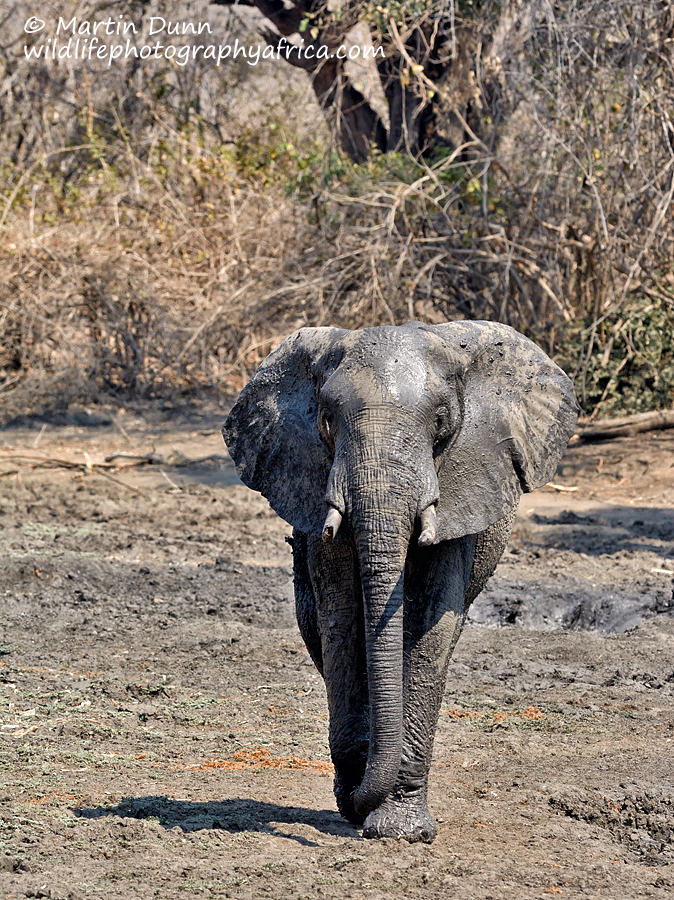
Although the mud looked unappealing to us, the elephants clearly loved it and indulged in mud baths and mud showers;
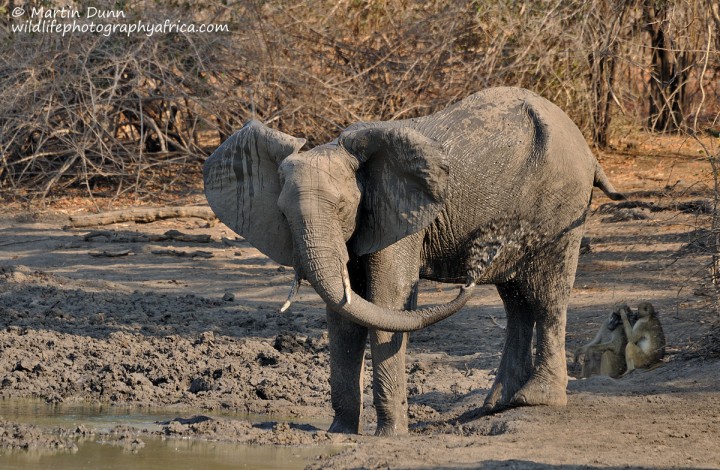
sometimes just lying there for ages.
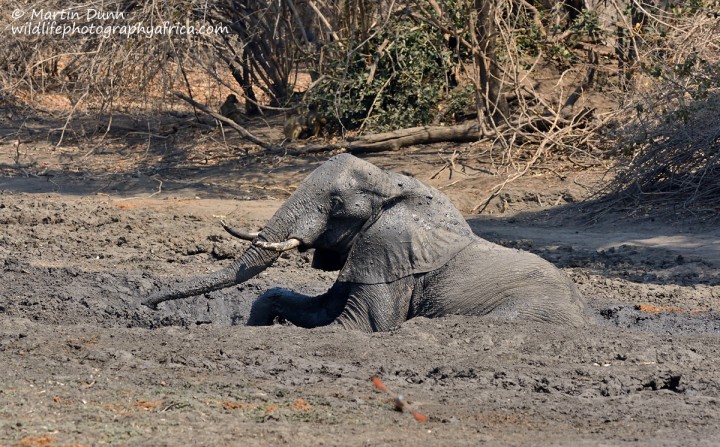
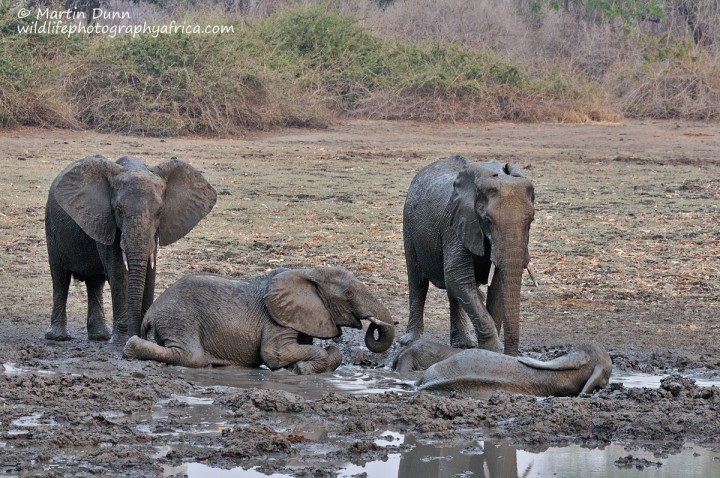
We noticed that there were a lot of very young calves as well, and they had an absolute ball in the mud.
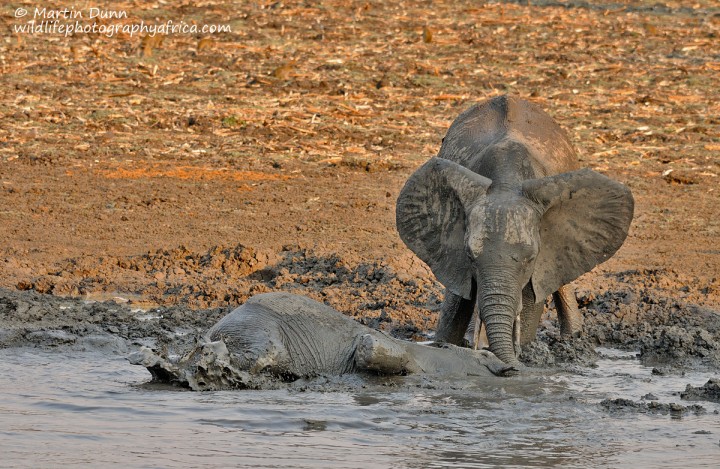
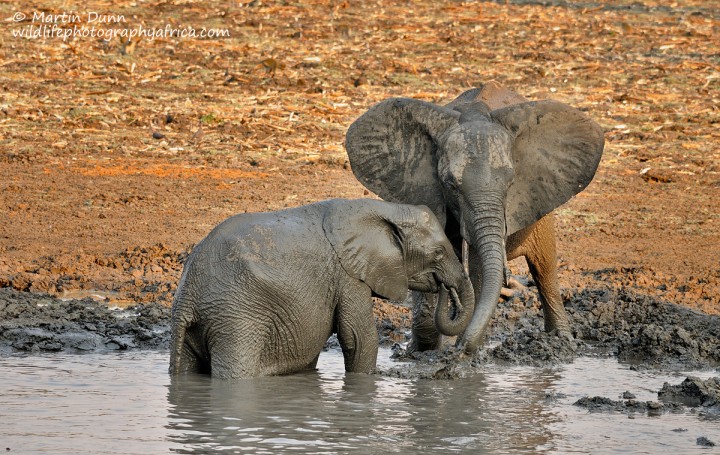
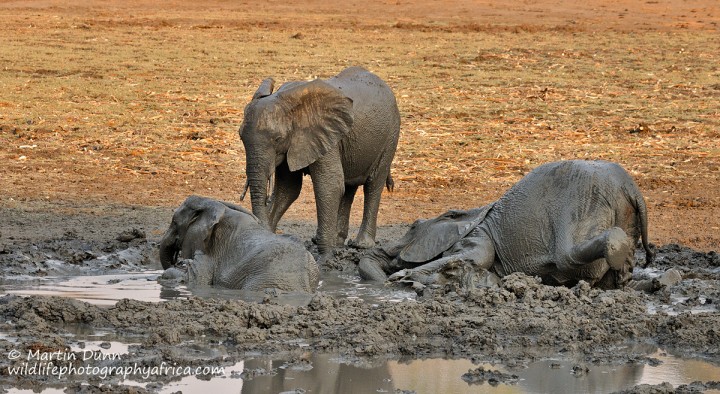
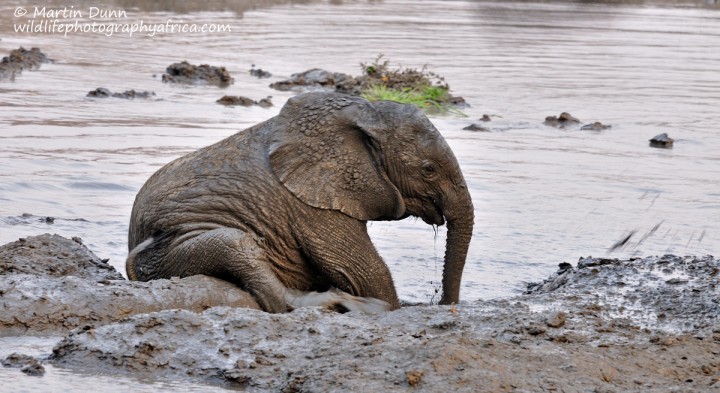
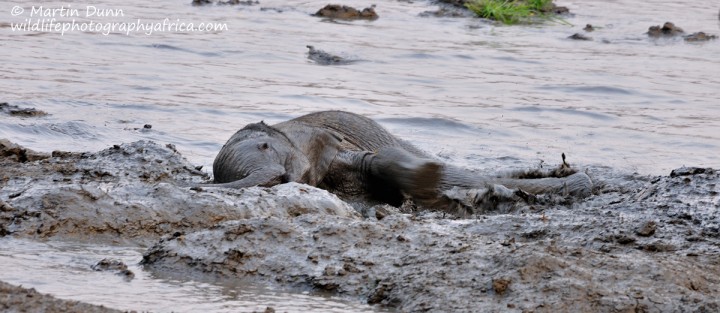
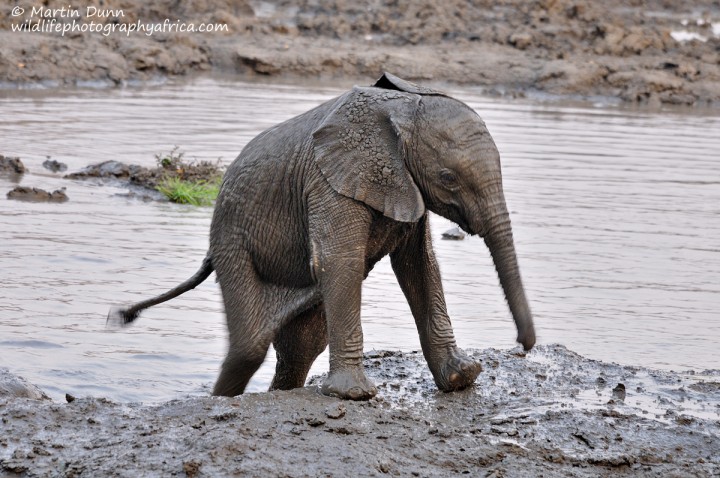
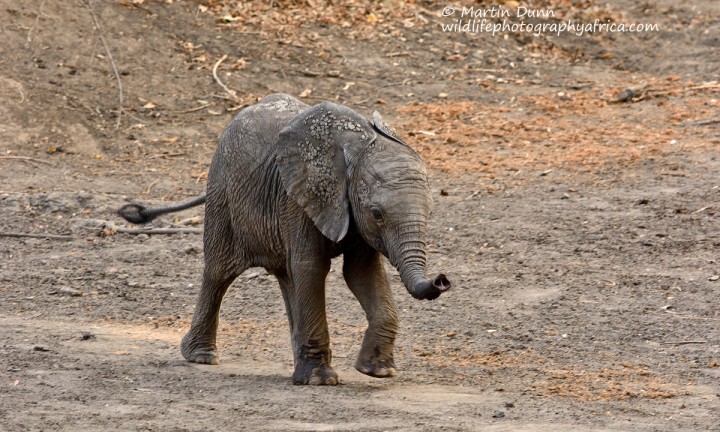
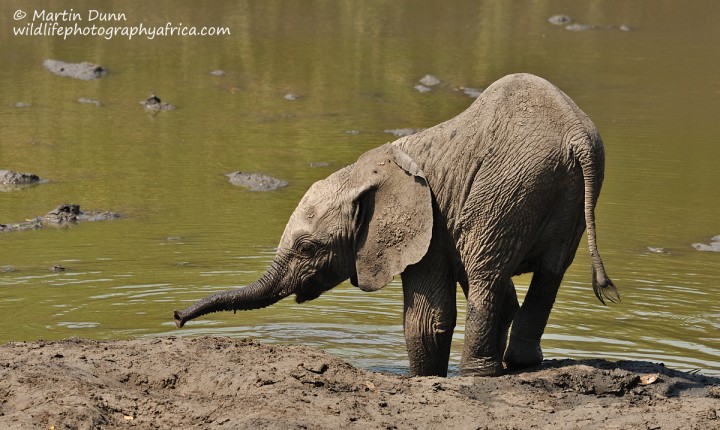
Kanga Pan’s claim to fame is that it is a year round waterhole. But it doesn’t achieve this feat unaided. Kanga Camp draw their water from a borehole and twice a day in dry season they pump thousands of litres of water into the pan to ensure it doesn’t run dry.
The elephants know this. We watched some of the them, usually young bulls, arrive when they thought it was time for the pump to start and make their way right up near the deck so that they could drink the clean water as it came out of the pipe, rather than drink the less clean water in the pools.
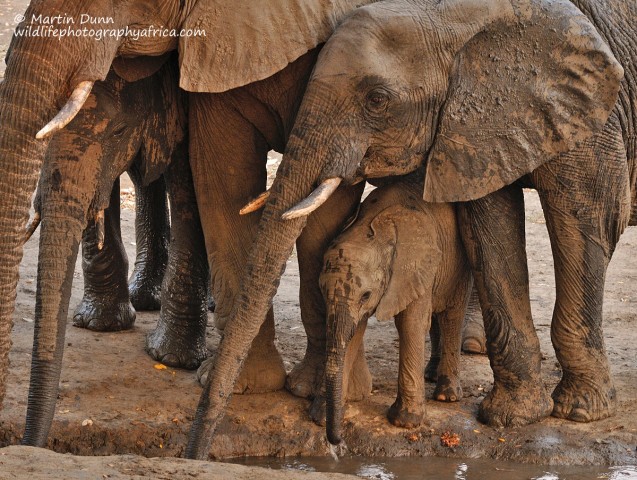
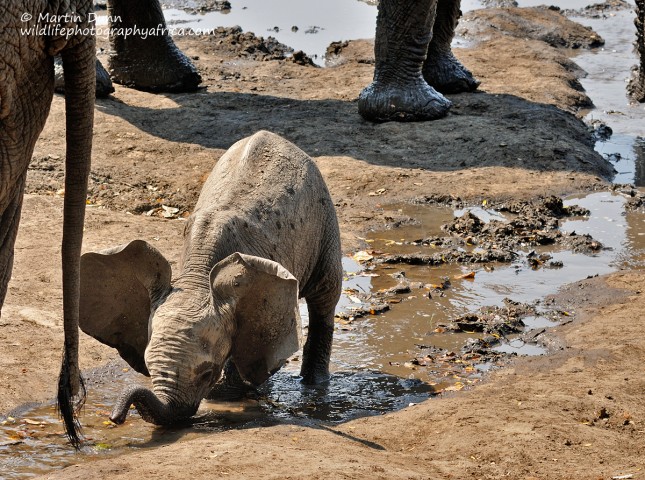
And if the pump isn’t running, the elephants are naturally curious and sniff around the deck at Kanga Camp
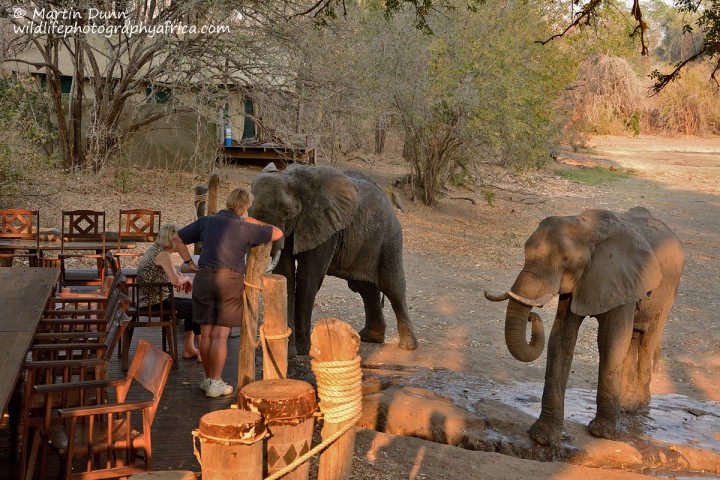
On our walks in the bush near the camp we’d often come across mud smeared trees where elephants had stopped to scratch and rub after their mud baths.
